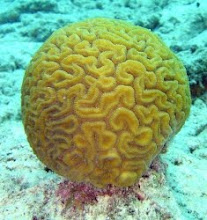Alarmingly, natural activity exceeds the range between zero-sum predator-prey competition and win-win cooperation. That is because action is brought to the world in every light-like wave, and quickly leads to astonishing and exceeding varieties in the resulting molecular forms and activity that emerge between species as well as among the human species.
A natural balance exists between zero-sum predator-prey games and cooperative win-win games. This is difficult to see close up but at the extremes there are factors which create limits preventing absolute dominance by one form or the other.
The whole ecosystem grows toward abundance, yet it does not care whether that growth is through zero-sum competition or win-win cooperation. It is throughout the entire planet.
Variations include:
Cross-species cooperation introduces opportunities to see ways in which services to another species can be traded for services in return. In other words, win-win games can more easily evolve between species that are different, than among otherwise unidentifiable groups within one undifferentiated species. The species differentiation becomes a tool.
Undifferentiated species can demonstrate win-win relationships in abundance though it frequently consists of relationships between individuals, not subgroups of otherwise indistinct individuals. If a subgroup emerges, then it tends to evolve differences in form or behavior that make the distinction easier to accomplish.
Zero-sum predator-prey relationships are not based very much on intelligence, which prefers to avoid pain. On the other hand, they serve the humbler roles of fighters, defenders or attackers more readily. In particular, zero-sum predator-prey relationships sacrifice the feel-good though intellectually demanding win-win negotiations and instead yield to suffering the indignity of being consumed alive in an extreme state of pain which is probably naturally converted into a kind of masochocistic state of blissful surrender in agonizing pain. This is a natural extreme of prey animals.
Notably, few prey animals waste much energy on vocalizing their pain and the vocalization does not extent into extremes of volume much beyond their normal calling volume, though they may be more chaotic.
The point is that in human society there will always be two distinct reaches and they are not necessarily predictable. At the outset, it should be remarked that because literate descriptions are usually the domain of the win-win approach, it is normal to find zero-sum conditions described disparagingly.
The author will try to avoid making value distinctions more than to make the value extremes distinct.
At one end of the range, intelligent persons communicate, confer, assemble and in other ways discuss the state of society, its needs, problems, and goals, and arrange ways in which different, cooperating groups can produce solutions, goods and services, guidance, plans and systems to solve present and future needs of society. Because it involves the exchange of intelligent information, it is typical for considerable time to be spent on measuring problems and estimating solutions in terms of energy and other variables related to the action.
For some sophisticated problems such as economic, architectural, or sensitive services such as education, negotiations, design and planning may span years.
Particularly in any event, the outcome of which is certain to involve distinctly pure energy outcomes - such as the proposed though far from scheduled exploration of Mars in depth - the spacecraft that will carry human beings to the Martian surface, support them during the exploration, and return them safely to Earth will involve a staggering range of energy*time outlays of action.
Just at the outset, let me say this is based on a time indulgent assumption of several centuries before comfortably designed systems are likely to emerge. Anytime during the next thousand years is probably soon enough.
That of course is one extreme of civilization. Another extreme is the omnivorous consumption of food animals which are raised specifically for the purpose of slaughter for human consumption. The milking of dairy animals is a specialized subcategory of that. In return for abundant food and water, protection from disease and wild animals, and other factors assuring their abundance, food animal species suffer as briefly and painlessly as possible - certainly less painful than being chewed into pieces while still alive as wild predators do in taking prey.
The wild predation model is at another extreme of the energy balance picture. There are few or no opportunities among predator-prey groups for negotiating intellectual decisions, although some prey herds manage to use the chase scene as a means of winnowing out weaker and less popular individuals who are left as prey for the predator, instead of potential mates which might not produce the most desirable offspring.
So the distribution of life activities into the very broad range between zero sum predator-prey relationships, and cooperative win-win strategies, is, with a little tolerance for gross details distributed among the species of earth as variations on the energy relationships.
At one end, species engage in the fine-energy balances of working out detailed activities to help each other either in form or energy or both. Flowers adapt forms to accommodate bees, other insects and animals, while the animals of every kind adapt their behavioral activity.
This is a case where, across a boundary of kind (plant vs. animal) the two typically have settled on two different forms of the action. Plants adapt, though slowly in form, with the action conjugate momentum taking up the variation. Animals adapt quickly, sometimes instantaneously, sometimes within a season or generations, with the energy dimension permitting great variation in behavior.
Action is brought to the world in every light wave, and quickly leads to astonishing varieties in molecular forms and activity.
The resulting varieties of action can be resolved into many different conjugate pairs, such as
1. Position and momentum: Flowers and their forms are the most obvious examples.
2. Momentum and length (closely equivalent to (1) includes spider webs, long-tongued insects and reptiles, and the peculiar glowing worms of certain caves, which capture insects in sticky goo.
3. Energy and time. E.g. puffball fungus; 17-year cicadas; bombardier beetles, trap door spiders
3. Mass and area/time. Lichens and moss are good examples
4. Many other far more complex variations on the action, including echo location among bats and porpoises
The action can involve scents and fragrances, flavors, pheromones, and all the exotic varieties and so on. Variations in nature are extreme and constitute a wonderfully varied selection of nature programs on television.
The point is that now, as this new millennium opens, the world has just completed thousands of years of painfully groping, often brutal struggle to reach the Moon, complete with honest confusion, similarly honest mistakes where the confusion was equated with, say, imaginary threats from outer space, or outright opposition to attempting the Moon, and all kinds of other excuses for war.
Everywhere on Earth, human populations are turning gratefully to the activity of rebuilding their civilizations, constructing their cities anew, and this time with the happy event of having enough peace to decorate them with hope - sadly so long neglected. It takes a truly callous person to defile the new societies and the new constructions now that the world, even the entire solar system, has essentially no shadows of fear, ignorance or doubt.
Unashamed of their relief at finding a few years of peace, human beings are absolutely justified everywhere in the world for being vigilant and suspicious of violations of that peace. Nobody needs to be ashamed of being grateful for peace.
Yet there will always be that great range of activity taking place, in which at one end will be abundant, careful time and intelligence to design win-win relationships, and at the other end, the simple expedience, in the absence of intelligence, of engaging in the zero-sum action of violating some more passive and vulnerable pray. In most cases, human beings keep the zero sum predator-prey relationships off the table and out of the house, as the domain of pestilential creatures such as termites, and carnivorous creatures such as rats, big cats and bears.
The problem is that economic systems are not well designed to avoid triggering zero-sum responses throughout the range from wealth the poverty. In fact, economic systems to date do not appear to directly address the problem at all on either the wealthy end or the poor end.
Now the space aliens are gone back to the imagination at least for the foreseeable future; now there are human footprints on the Moon, and Mars is positively littered with old robots.
There is abundant time now to examine human institutions more closely, and see just how it is, and to what extent, the concepts of John von Neumann and Oskar Morganstern permit the human choices of zero-sum and win-win structures on the way in which competition is permitted to exist in economic activity.
Probably, those ideas will shape the evolution of species on earth for millions of years.
It would be a shame not to do something decisive in the range of natural competition during the next century, or even this new millennium.
Though getting with the action invited extremes, failure to know the implications of those extremes will leave many human populations, high and low, ignorance of the potential dangers in their fates.
Subscribe to:
Post Comments (Atom)







No comments:
Post a Comment